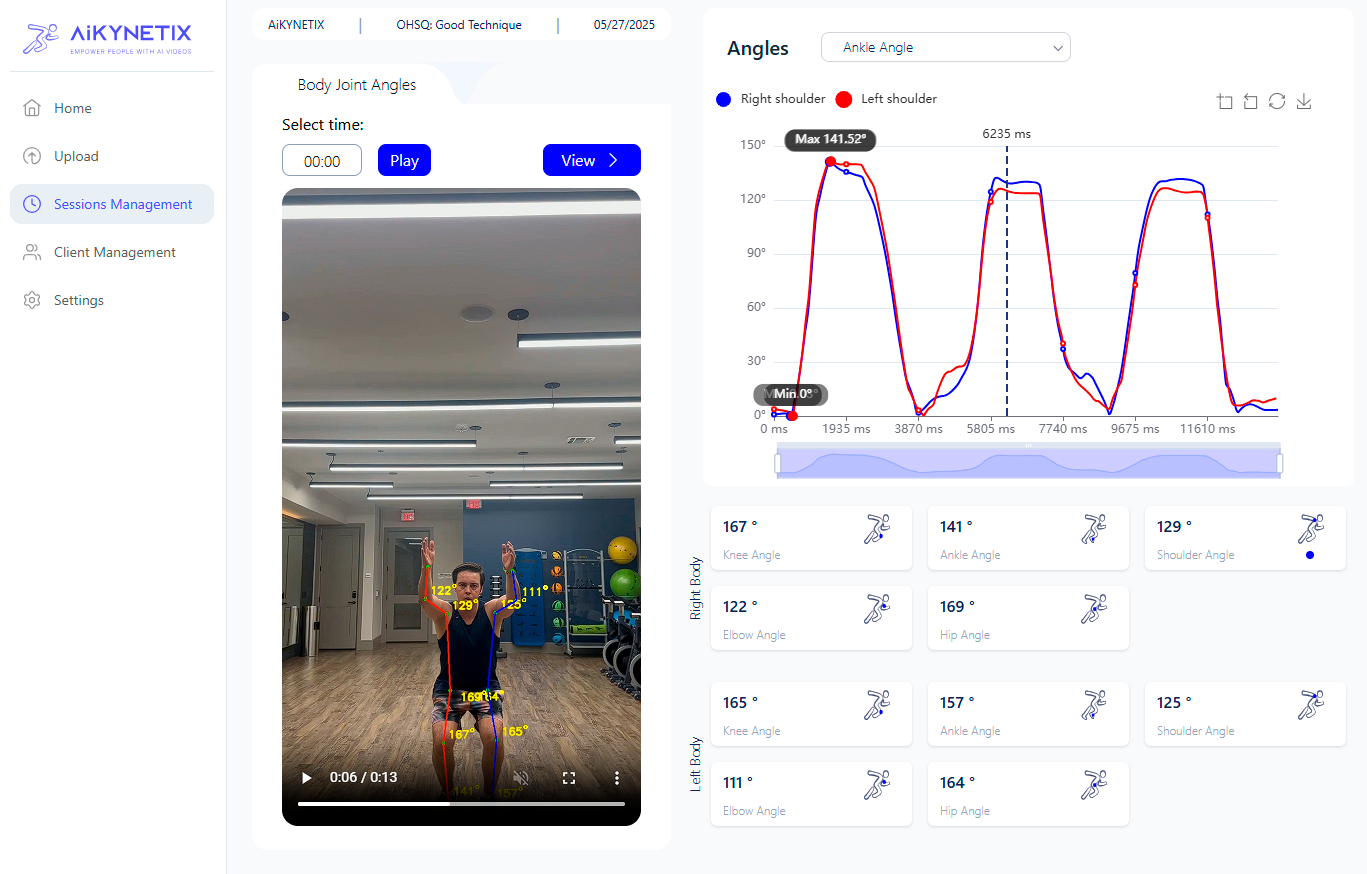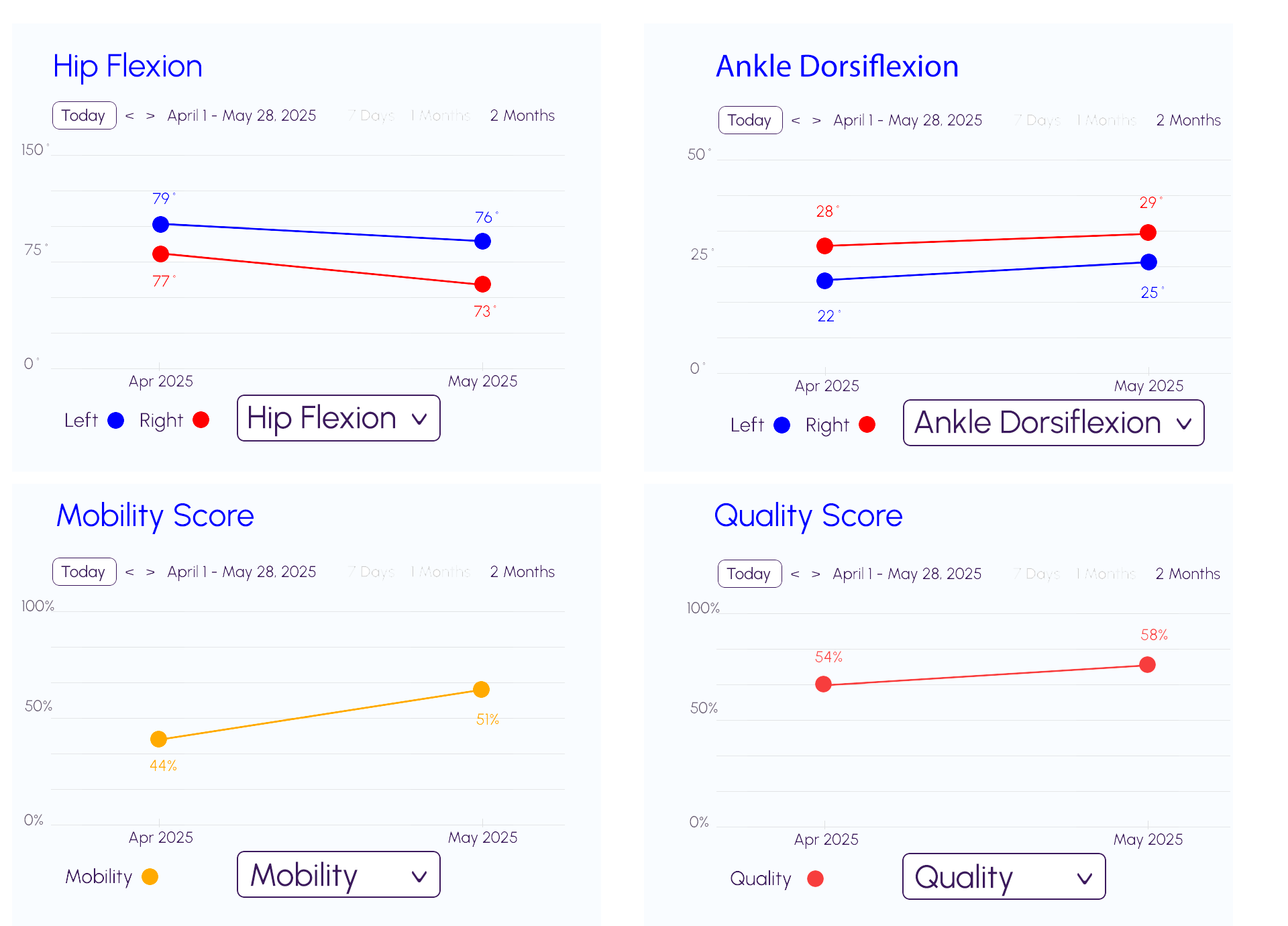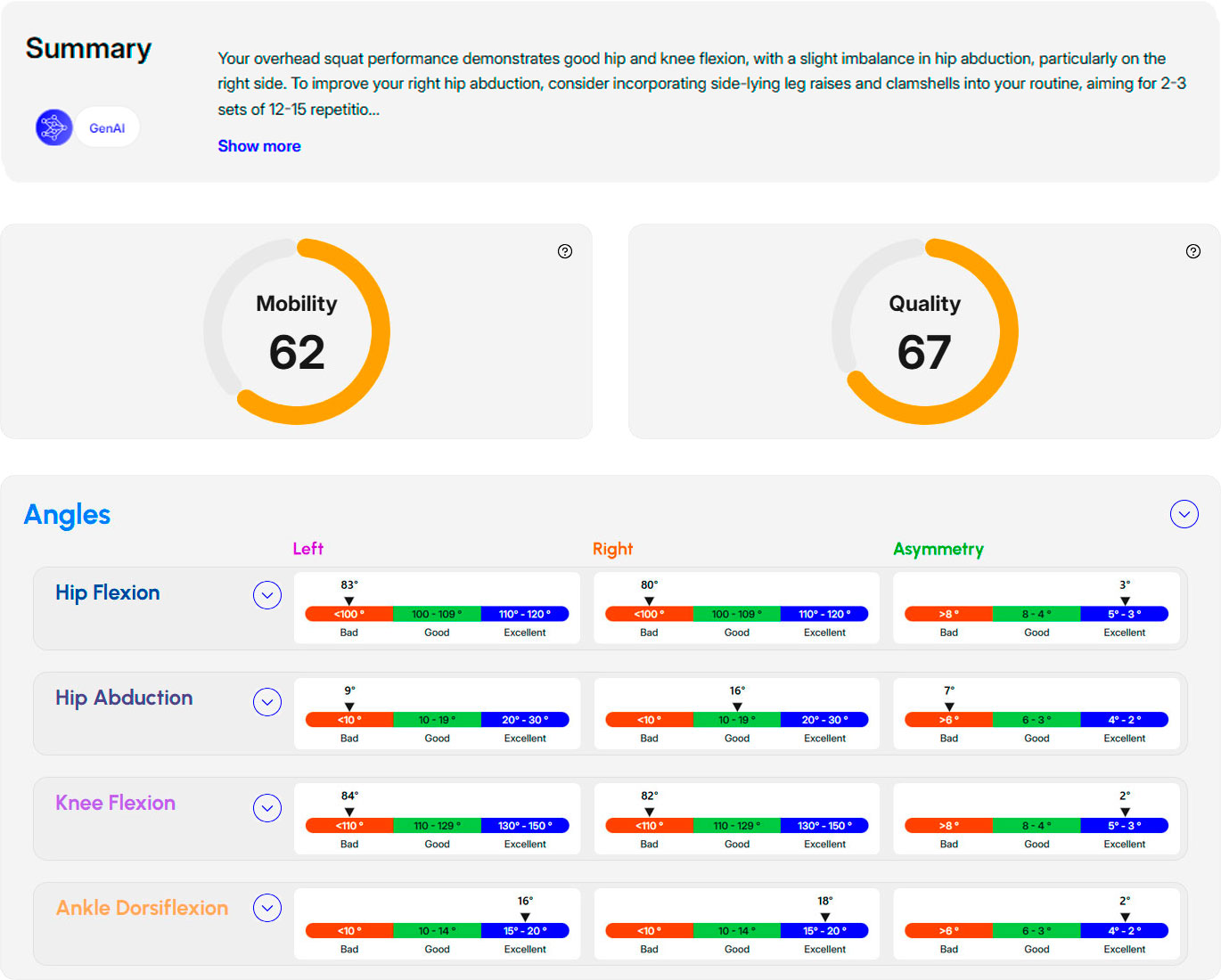What can you learn from two squat videos? A lot—especially when they're analyzed with the AiKYNETIX Web Platform.
We recently captured two overhead squat videos of the same subject: one performed with poor technique and the other with improved form. Using just a smartphone and the AiKYNETIX system, we ran both clips through our motion analysis engine to measure joint angles, symmetry, and overall movement quality. The results offer a compelling glimpse into how biomechanics data can reveal physical readiness, fatigue, or even early signs of injury risk.

Pic 1. Same subject. Different technique. See the difference.
🟡 The "Bad Technique" Squat: What the Numbers Say
- Mobility Score: 44%
- Quality Score: 54%
- Hip Flexion (L/R): 79° / 77°
- Ankle Dorsiflexion (L/R): 22° / 28°
- Key Red Flags: Limited dorsiflexion, poor hip abduction, and significant asymmetry in ankle motion.
Biomechanics Insight:
These results suggest restricted mobility in critical joints responsible for shock absorption and force distribution in a squat. According to functional movement principles, limited ankle dorsiflexion often forces compensatory forward trunk lean or knee valgus—known contributors to ACL and patellofemoral stress. Poor hip abduction on the right side (7° asymmetry) also suggests weakness or instability in the glute medius, a key stabilizer.

Pic 2. Real angles, real data. Instantly measured.
🟢 The "Good Technique" Squat: Improved, But Not Perfect
- Mobility Score: 51%
- Quality Score: 58%
- Hip Flexion (L/R): 76° / 73°
- Ankle Dorsiflexion (L/R): 25° / 29°
- Key Improvements: Reduced asymmetry, increased dorsiflexion, and more balanced hip engagement.
Biomechanics Insight:
While total mobility remains moderate, the more symmetrical joint function indicates better neuromuscular control. Improved dorsiflexion allows for deeper, more upright squats with less compensatory strain on the knees and spine. The small but meaningful gains in symmetry reduce the risk of uneven loading and chronic overuse on one side of the body.
📈 What This Tells Us About Readiness and Fatigue
Comparing these two sessions can give a coach or clinician actionable insight into:
- Acute fatigue: Decreased range of motion or asymmetry may signal overtraining or poor recovery.
- Movement quality vs. quantity: Not all reps are equal—AiKYNETIX lets you assess if technique deteriorates as volume increases.
- Training effect over time: Even slight improvements in dorsiflexion or hip control show that the subject is adapting—and how fast.

Pic 3. Tracking progress over time—not just by feel.
🔍 How AiKYNETIX Makes This Possible
With our platform, biomechanics data that once required a lab is now accessible in seconds:
- No sensors. No suits. Just a smartphone.
- Automatically measures joint angles, range of motion, and asymmetries.
- Tracks progress across sessions to detect small improvements or warning signs.
- Outputs shareable reports for coaches, clinicians, or athletes themselves.

Pic 4. From phone to feedback in seconds.
🛡️ Why This Matters: Injury Prevention Starts with Data
Injury prevention is less about reacting to pain and more about identifying risk early. By objectively measuring key indicators like hip mobility and ankle asymmetry, AiKYNETIX helps coaches make smarter programming decisions—adjusting intensity, mobility work, or recovery based on real movement data.

Pic 5. Your full breakdown. Ready to share or apply.
🏁 Final Takeaway
Two squats. One subject. One tool that turned guesswork into guidance.
If you’re coaching, rehabbing, or training athletes and want to understand how they move—not just how it looks—AiKYNETIX helps you track progress, assess readiness, and reduce risk with precision.
If you’re coaching, rehabbing, or training athletes and want to understand how they move—not just how it looks—AiKYNETIX helps you track progress, assess readiness, and reduce risk with precision.
📖 Explore More:
1️⃣ Why the Squat Is Essential—and Why We Should Be Measuring It with Smart Tools
2️⃣ How to Record Squat Videos for AI-Powered Analysis
1️⃣ Why the Squat Is Essential—and Why We Should Be Measuring It with Smart Tools
2️⃣ How to Record Squat Videos for AI-Powered Analysis


